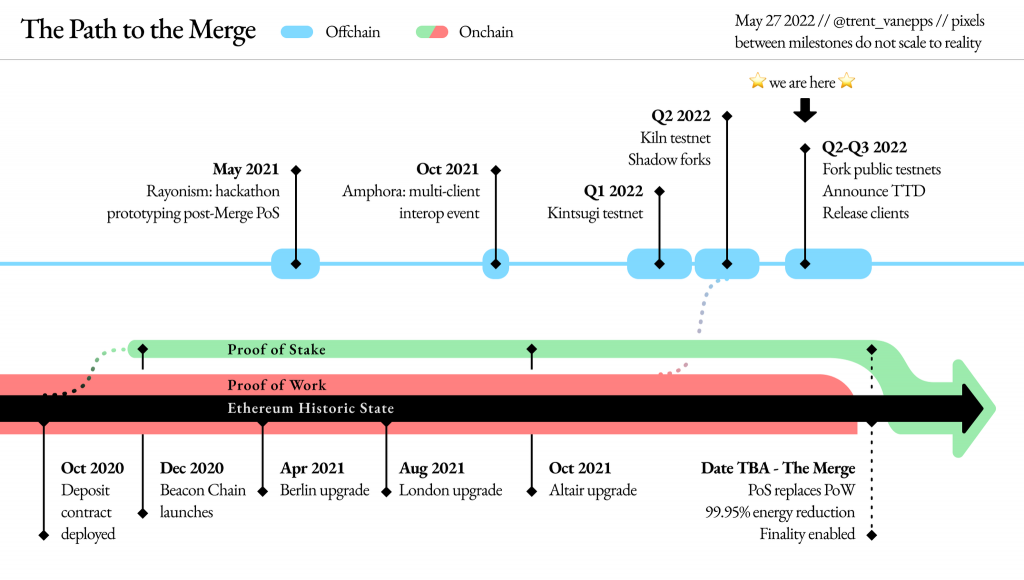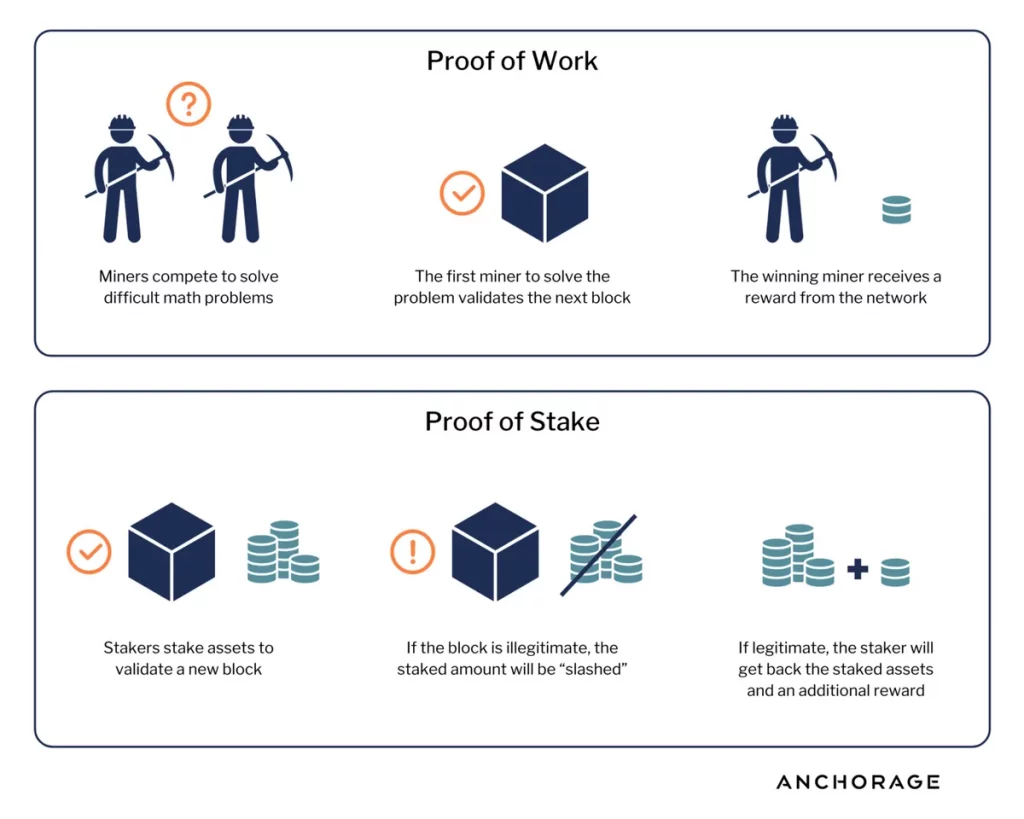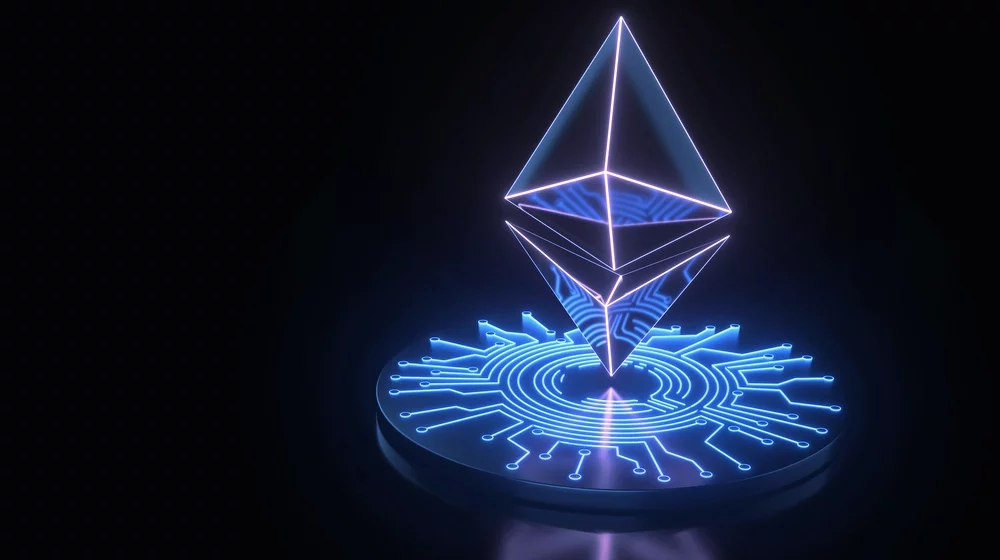The price of ETH – whose current market value near $200 billion makes it the second-largest cryptocurrency after bitcoin (BTC) – was largely flat after the Merge.
The update, which ends the network’s reliance on the energy-intensive process of cryptocurrency mining, has been closely watched by crypto investors, enthusiasts, and skeptics for the impact it is expected to have on the wider blockchain industry.
The Ethereum Merge
The Merge is Ethereum’s multi-year planned transition for the altcoin’s blockchain. Ethereum’s objective is to move from proof-of-work to proof-of-stake and reduce the blockchain’s carbon imprint by 99.95%. The launch of the Beacon chain in 2020 was the first step towards this transition and the completion of the last shadow fork was the pre-final one.
The massive overhaul of Ethereum known as the Merge has finally happened, moving the digital machinery at the core of the second-largest cryptocurrency to a vastly more energy-efficient system after years of development and delay.

POS & POW
It was no small feat swapping out one way of running a blockchain, known as proof-of-work, for another, called proof-of-stake. “The metaphor that I use is this idea of switching out an engine from a running car,” said Justin Drake, a researcher at the non-profit Ethereum Foundation who spoke to CoinDesk before the Merge happened.
When the Merge officially kicked in at 6:43 a.m. UTC, more than 41,000 people were tuned in on YouTube to an “Ethereum Mainnet Merge Viewing Party.” They watched with bated breath as key metrics trickled in suggesting that Ethereum’s core systems had remained intact. After about 15 long minutes, the Merge was declared a success.
Mark Cuban, investor and billionaire owner of the Dallas Mavericks basketball team, told CoinDesk he would be “watching [the Merge] with interest like everyone else,” pointing out that it might make ETH, the network’s native token, deflationary.

A Transition for Stakers
The idea was there from the start that Ethereum would eventually make the switch to proof-of-stake. But the transition was a complicated technical effort – an endeavor so risky that many doubted it would happen at all.
“There’s a part of me which hasn’t completely realized that this is actually happening,” Drake said. “I’m somewhat in denial, you know because I’ve trained myself to just expect it to happen in the future.”
The update’s complexity was compounded by the fact that it may have been one of the largest open-source software endeavors in history, requiring coordination across dozens of teams and scores of individual researchers, developers, and volunteers.
Tim Beiko, an Ethereum Foundation developer who played a key role in coordinating the update, said to CoinDesk, “I think the Merge can genuinely get those people who were interested in Ethereum, but skeptical of the environmental impacts, to come and experiment with it.”
The Merge retires Ethereum’s proof-of-work system, where crypto miners competed to write transactions to its ledger – and earn rewards for doing so – by solving cryptographic puzzles.
The future of ETH Merge
Ethereum’s new system, proof-of-stake, does away with mining entirely. Miners are replaced by validators – people who “stake” at least 32 ETH by sending them to an address on the Ethereum network where they cannot be bought or sold.
These staked ETH tokens act like lottery tickets: The more ETH validator stakes, the more likely one of its tickets will be drawn, granting it the ability to write a “block” of transactions to Ethereum’s digital ledger.
Ethereum introduced a proof-of-stake network in 2020 called the Beacon Chain, but until the Merge, it was just a staging area for validators to get set up for the switch. Ethereum’s transition to proof-of-stake involved merging the Beacon Chain with Ethereum’s main network.
For Buterin, the Merge is just the beginning. “To me, the Merge just symbolizes the difference between early stage Ethereum and the Ethereum we’ve always wanted … to become, “he said on Thursday’s live stream. “So let’s go build out all of the other parts of this ecosystem and turn Ethereum into what we want it to be.”

